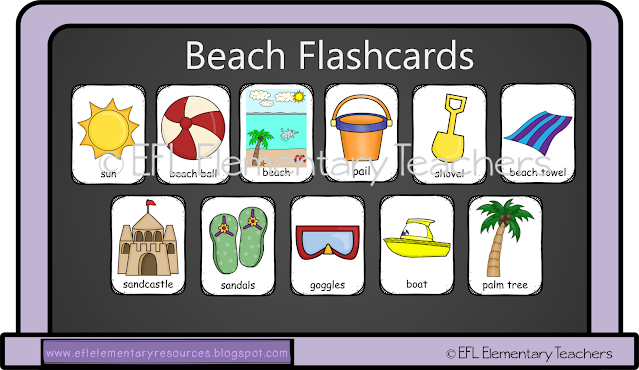Very few books have units related to insects, so this
could be a unit to include for those extra lessons that you want a quick unit
to review basic grammar structures and add new words.
Here is the link to the resource.
https://www.teacherspayteachers.com/Product/Bugs-or-Insects-Unit-Resources-for-Elementary-ESL-4136295
Here is the link to the resource.
https://www.teacherspayteachers.com/Product/Bugs-or-Insects-Unit-Resources-for-Elementary-ESL-4136295
I would love that you leave me some feedback at the comments section of this blog post.
And yes, I always start with flashcards as my visual
aids to avoid translation and stimulate speaking.
What color are the bugs?
Place all the flashcards on the board
and ask questions.
Teacher: What color is the butterfly?
Student: It’s pink and
green.
Teacher: name two red bugs.
Student: ant and ladybug.
There’s a worksheet
to review colors and prepositions.
Students: The ladybug is black and red.
Teacher: Where is the ladybug?
Students: The ladybug is on the tree.
Have the students write a paragraph about the picture.

Bugs are everywhere. I researched a little to make the flashcards to indicate where I can find the bug and their habitat. I also added the sun to imply that the bugs like warm weather. I made an example with a butterfly and a ladybug and created a mind map.
Teacher: Where can I find a butterfly?
Student 1: On the
rock.
Student 2: On the
leaf.
Student 3: In the
garden.
Student 4: On the
flower.
Place a habitat or place flashcard
on the board and ask which bug is most likely to be found there. I suggest that
you research about bugs and the students as well.(mind map)
Teacher: Here is the mountain. Which bug can I find there?
Students: spiders !
Teacher: yes! More examples!
Students: mosquito!
Teacher: NO!!
Place
an insect and a habitat or place flashcard,
one next to the other. (mind map)
Teacher: Is there a grasshopper on the plant?
Students: Yes, there is.
Teacher: Is there a scorpion in the farm?
Students: No, there isn’t.
And
the cutouts are a good visual
for prepositions.
Place
the habitat or place and a bug. Ask questions and have them write the answers
on their notebooks and they can even draw a picture.
Teacher: Where is the caterpillar?
Students: The caterpillar is on the leaf.
You
can also give the printed bugs and habitat to the students. They can create a poster and a text. Do a show and tell.
Have the students ask questions.
Student1: Is there a worm?
Show and tell student: No, there isn’t.
Student1: Is there a
fly?
Show and tell student: Yes, there is. It is in the house.
Hang
the posters around the class.
Bugs feed themselves! Use
the flashcards to show what a
specific bug eats.(mind map)
Teacher: Look at the bee? What does it feed on ?
Student: watermelon, nectar from flower, soft drinks.
Or,
use the flashcards to compare an
item and which bugs eat them.(mind map)
Teacher: Which bug feeds on grass?
Student: worm and grasshopper!
Assign a bug to each student. They should investigate
what does that specific bug eat or feed on. Then make a writing craft. I saw a
similar one on Pinterest and I will recreate mine. Then have individual
students come and show their bug.
A
simple worksheet to review big and
small. Have them sort the bugs and glue them. Model sentences.
Teacher: A big red ant.
Students: A small red ant.
Place the bugs flashcards on the board and have the students organize them by size.
Teacher: The big red ant is small.
Students: The green grasshopper is big.
Teacher: The black fly is bigger than the ant.
Students: The black fly is smaller than the butterfly.
Ask questions.
Teacher: Which is bigger, the butterfly or the cockroach?
Students: The brown cockroach is bigger.
Bugs have a body. Use
the flashcards to introduce
the body parts. The students are familiar with eye, head, leg but the other
words are new and are the same for all the bugs: thorax, abdomen. (LABELING)
Use the worksheets for the students to do the same to review body parts. Students can use the labels or write thier own words.
A game to wrap the unit up. Place all the
flashcards on the board and start saying
facts for the students to guess which bug is the one you are talking about.
Teacher: It has two antennae. It has six legs. It is small.
It doesn’t have ears. It never sleeps. It red or black. Some people can eat it.
It can crawl. It lives in colonies. It eats sweets.
Students: The ant!
It
is good that you research about the insect facts to play the game, or students
can research and play as the teacher and the class has to guess.
Bugs have predators.
Explain about predators. I placed as an example the ladybug which is eaten by
spiders, dragonflies, birds and frogs using the flashcards. (mind map)
Follow me ! Follow me at my TPT store: https://www.teacherspayteachers.com/Store/Holistic-English-Resources-By-Rosa-Amelia

































































